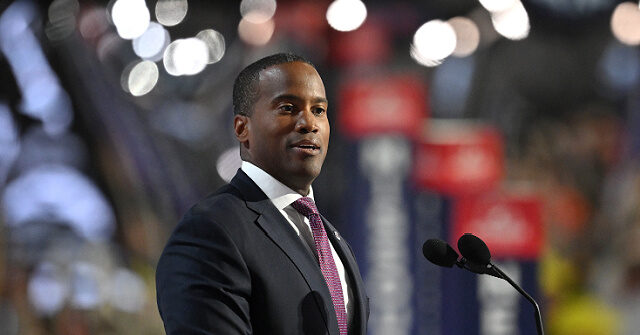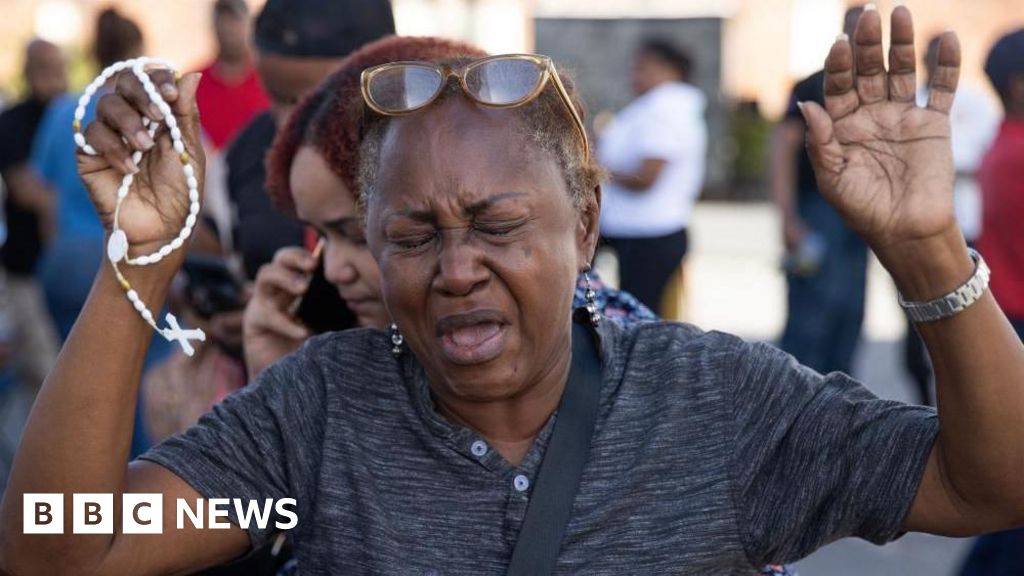At the Republican National Convention in Milwaukee, Donald Trump described the migrants at the U.S.-Mexico border as “the greatest invasion in history.” He claimed migrants and asylum seekers were “coming from prisons. They’re coming from jails. They’re coming from mental institutions and insane asylums.” He repeated this claim at the National Association of Black Journalists Convention. This led to multiple social media posts charging Trump with conflating two meanings of the word “asylum.”
But Trump’s conflation of asylum seekers with patients from mental health facilities is a trope many decades in the making. In fact, it likely comes from the way in which the 1980s, in particular, shaped his thinking and view of the world. By claiming migrants were coming from institutions, Trump made a veiled reference to one of the most intense immigration crises of the 1980s: the Mariel boatlift. And he’s not alone. Narratives about Mariel, frequently grounded in false information, have helped fuel a hostile populist politics that has been used by politicians, policy wonks, and voters to justify their embrace of punitive immigration restrictions.
Prior to the boatlift, Cuban refugees were generally regarded as an asset in the Cold War and as a model community in the United States. Starting in 1959, growing numbers of Cubans made their way to the United States, as many became disillusioned with Fidel Castro and the revolution. Because Cubans were fleeing communism, the U.S. government allowed them unprecedented access to the country. Government agencies, with the help of media outlets throughout the nation, fostered the image of these early refugees as respectable, middle-class people fleeing communism and embracing the U.S. as a place of temporary refuge. This was followed by new waves of migration to the United States, shaped by the evolving U.S. relationship with Cuba and economically supported by the federal Cuban Refugee Program of 1961.
Read More: America Turned Against Migrant Detention Before. We Can Do It Again
But in 1980, Castro initiated a new migratory crisis of unprecedented intensity. Faced with an ailing economy and thousands of Cubans seeking asylum at the Peruvian embassy in Havana, Castro declared that anyone who wished to leave the country could exit through the port of Mariel. In response, Cuban Americans bought, chartered, or borrowed a fleet of vessels to bring their friends and family members to the United States. Between April and October of 1980, over 125,000 Cubans entered the country.
Among many other things, the boatlift provided Castro’s government a chance to rid the country of people who leaders of the revolution viewed as “undesirables.” Those seeking to leave the island were not portrayed as regular people disaffected by the status quo, but as escoria, or scum, who sought to undermine the revolution and harm Cuban society. The Cuban government made many of these asylum seekers, who became known as the Marielitos, sign documents falsely confessing to “social deviancy” and to crimes against the state.
To further this media-driven narrative, the Cuban government added convicted criminals to the population of the boatlift. While some 26,000 Marielitos had criminal records, many had been convicted of lesser offenses or acts which would not have been considered criminal in the United States. This population included, for example, LGBTQ Cubans who had been vulnerable to prosecution by homophobic policies and laws. In addition, the Cuban government also expelled patients from mental-health facilities, and people with intellectual disabilities.
When the vessels sent to retrieve loved ones arrived in Mariel, they were often denied the passengers they sought to bring to the U.S. At times, they were forced to take on greater, often-unsafe, numbers of asylum seekers, including those recently released from state facilities. Reporters covering the boatlift noticed this practice. Led by a series of New York Times reports and editorials that noted the presence of “ criminals,” “mental cripples,” and “even leprosy patients,” among the refugees, the national press largely—and unjustly—embraced Castro’s contention that Marielitos were scum.
The new arrivals also received far less financial assistance than previous Cuban refugees. The sheer volume of arrivals in a short time frame, the lack of comprehensive aid, and the accompanying media narrative made the Marielitos appear to be a destructive force. In this way, they seemed to confirm fears that they were Castro’s weapon deployed to destabilize and irk the U.S.
This image hurt the political career of then-Governor Bill Clinton. The federal government had established a temporary facility for Cuban entrants at Fort Chaffee, Ark. In the aftermath of disturbances and escape attempts among those detained there, Clinton’s opponent, Frank White, ran a campaign that linked the governor to the unpopular Marielitos. It helped cost Clinton his re-election bid. He rebuilt his political career, of course, but the incident taught him a lesson about the political perils of appearing weak during an immigration “crisis,” particularly one fostered by an adversary like Castro.
In the summer of 1994, when Clinton was president, he was faced with an event that some dubbed “the Second Mariel”: the Cuban rafter crisis. This time, asylum seekers took to the sea in makeshift rafts, seeking U.S. soil. And while there were no narratives about the asylum seekers’ criminality or association with mental illness, the response was shaped by Mariel and political lessons Clinton had learned in 1980. Clinton was also operating in a political environment that featured a rising tide of anti-immigrant fervor. California’s Proposition 187, a ballot initiative that would bar undocumented people from public services, had already made national news that summer.
Read More: America’s Border Wall Is Bipartisan
Clinton moved to prevent another mass Cuban arrival and to stave off attacks by people who supported restricting immigration, announcing the rafters would not be allowed onto American soil but would instead be taken to the U.S. Naval Base at Guantanamo Bay. In May of 1995, a new U.S.-Cuba immigration accord was announced. The Guantanamo refugees would be allowed into the country, but a new policy that became known as “wet foot, dry foot” made it so those intercepted at sea would be returned to Cuba. While this policy drew anger from Cuban Americans, the acceptance of Guantanamo refugees also led anti-immigrant groups in Florida to announce an ultimately failed push for ballot measures modeled on Proposition 187 in the 1996 election cycle.
In recent years, the specter of Mariel has been invoked to further populist anti-immigrant rhetoric and policies. In 2017, the Trump Administration expressed its support for the RAISE Act, a bill that would have drastically reduced legal immigration into the country. Trump Advisor Stephen Miller referenced a heavily disputed study by economist George Borjas claiming the Mariel boatlift had depressed wages for less educated workers in South Florida. Borjas aimed to disprove long held conclusions by economists that the Mariel influx had not affected the wages or employment outcomes of non-Cuban workers in Miami, with critics suggesting that Borjas had simply not proven his case. Like others before him, Miller revived a partial, flawed version of the Mariel story as a useful weapon to fuel anti-immigrant sentiments.
In May of 2023, Florida Governor Ron DeSantis signed SB 1718 into law. This far-ranging anti-immigrant law included criminal penalties for crossing state lines with an undocumented person, required hospitals to ask about immigration status, and provided funding for expelling undocumented migrants from the state. A column on whether this law would alienate Florida’s Latino voters from the state’s Republican Party quoted political scientist Eduardo Gamarra’s assertion that many Latinos he interviewed about undocumented immigrants saw the new arrivals as “chusma [riffraff], they’re like the marielitos.”
As Trump’s latest invocation suggests, Mariel remains a cudgel to be wielded against immigrants and asylum seekers. The Mariel boatlift was a traumatic event, particularly for the migrants themselves who faced ableism, homophobia, racism, and xenophobia. The Marielitos were not scum, but people forced onto a dangerous passage by one government, treated as a problem by another, and reviled in both countries. Still, most Marielitos built new lives and enriched the U.S. by their presence. As one Marielita put it, “Mariel taught me determination.” That a selective view of their history is trotted out repeatedly against other migrants and asylum seekers only compounds this original injustice.
Mauricio Castro is Assistant Professor of History and Chair of Latin American Studies at Centre College and the author of Only a Few Blocks to Cuba: Cold War Refugee Policy, the Cuban Diaspora, and the Transformations of Miami.
Made by History takes readers beyond the headlines with articles written and edited by professional historians. Learn more about Made by History at TIME here. Opinions expressed do not necessarily reflect the views of TIME editors.



















Discussion about this post